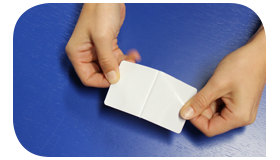Make your labels last longer with these tips!
As a company, it is of great importance that your products have a good quality appearance, and a
beautiful label helps with that. It is important that the label does not fade, wear out, or come off
quickly. To assist with this, Zolemba has compiled a number of valuable tips and advice to ensure
that your labels stay in good condition for longer. Keep reading to discover the steps you can take
to optimize the lifespan of your labels. With these tips, you not only save costs but also maintain
a professional look for your products.
Some aspects covered in this blog are:
A label can be affected in many ways by various environmental factors. We have listed these aspects below along with the best solution to extend the lifespan of your label.

The adhesive layer
All labels have an adhesive layer, and this layer has an expiration date. This expiration date differs for permanent and removable adhesives. From the moment the labels are produced at Zolemba, a permanent adhesive layer lasts for 2 years. For removable adhesive, it is 1 year, provided that you store your labels in a cool, dark, and dry place. After that period, the adhesive will weaken and adhere less effectively. Therefore, keep in mind to always apply your labels within that time. The expiration date of these adhesive layers is not fixed; the environment in which the labels are used influences the adhesion. It is therefore better to place smaller orders every 3 months rather than one large order per year, simply because the labels will be more recently produced.
To maximize the lifespan of your labels, Zolemba recommends avoiding the following aspects:
Direct sunlight
Direct exposure to sunlight and UV rays can result in fading or discoloration of the label. It can also decrease the legibility and quality of the label. This leads to a diminished appearance and loss of brand identity. Additionally, you save costs and effort by not having to constantly replace your labels. To prevent discoloration and fading, it is advisable to store your labels in a place where they are not directly exposed to UV radiation. Zolemba advises storing your labels in a dark, cool, and dry space, preferably in their original tightly sealed packaging.
Contact with chemicals
Exposure to chemicals can also cause color fading. This has a negative impact on the legibility and visual attractiveness of the label. Chemicals can also compromise the adhesive's bonding strength, resulting in poor adhesion and easy detachment from the product. Chemicals can also cause material corrosion, meaning certain chemical substances can physically damage the label. This results in tears, holes, or weakening of the label's structure. To prevent your labels from quickly deteriorating when in contact with chemicals, it is recommended to apply a transparent coating that provides better protection against harsh conditions. For blank labels, Zolemba suggests using the material "thermal top" for better protection against harmful substances.

Extreme temperatures
At high temperatures, there is a risk of weakening the adhesive bond, causing the label to become loose or easily peel off. High temperatures can also lead to fading, particularly for materials sensitive to heat, which can affect legibility. Additionally, both high and low temperatures can cause label distortion. Excessive heat can cause the label to shrink or bend, while very low temperatures can cause expansion or stiffening of the label, resulting in material tears. To ensure that your labels are not affected by excessively high or low temperatures, Zolemba advises storing them at room temperature for optimal durability.
Humidity
Excessive moisture contact can also have negative consequences for your labels. Different materials can deteriorate in a humid environment. Specifically, paper labels can become wrinkled due to moisture. Excessive moisture can also result in loss of adhesion, greatly affecting the adhesive layer. Lastly, there is a risk of mold and bacterial growth, which can lead to stains, odor issues, and material degradation. This not only compromises functionality but also jeopardizes hygiene. To prevent moisture ingress and the growth of mold, it is important to store the labels in a dry environment.
Rough handling
This refers to the physical forces to which labels are exposed during storage, transport, handling and use. Too much pressure, friction, abrasion or impact can result in tearing or deformation of the label. In addition, over time, the adhesion of the adhesive may diminish with repeated loading of the label and may cause wear and tear, making the label no longer legible. To avoid this, it is important that your labels are made of strong durable materials that can better withstand physical stress. A good example is polypropylene labels. It is also important that you avoid strain where you can, this can be in handling and storage, for example. For example, do not put products against each other, this can cause labels to wear out.
The best way to store your labels
Zolemba recommends keeping your labels cool, dry and dark to best minimise the above risks. It is also advisable to keep your labels in their original packaging and seal them tightly to protect them from dust, moisture, and air pollution. When using the labels, it is also important not to handle them too roughly as this can cause damage to the labels. Avoid unnecessary bending, folding or rubbing that can damage the label. By maintaining proper storage conditions, the labels retain their colour, adhesion and legibility. This ensures a professional appearance and satisfied customers.
Exclusive Offers and Free Tips!
Stay informed and never miss out on offers, handy tips, or free templates.
Thank you! You have successfully subscribed to our newsletter.